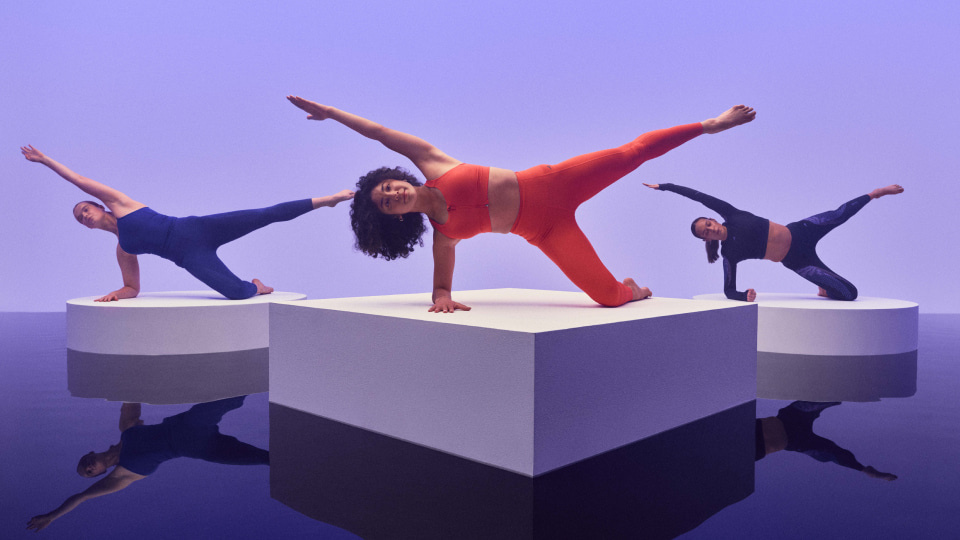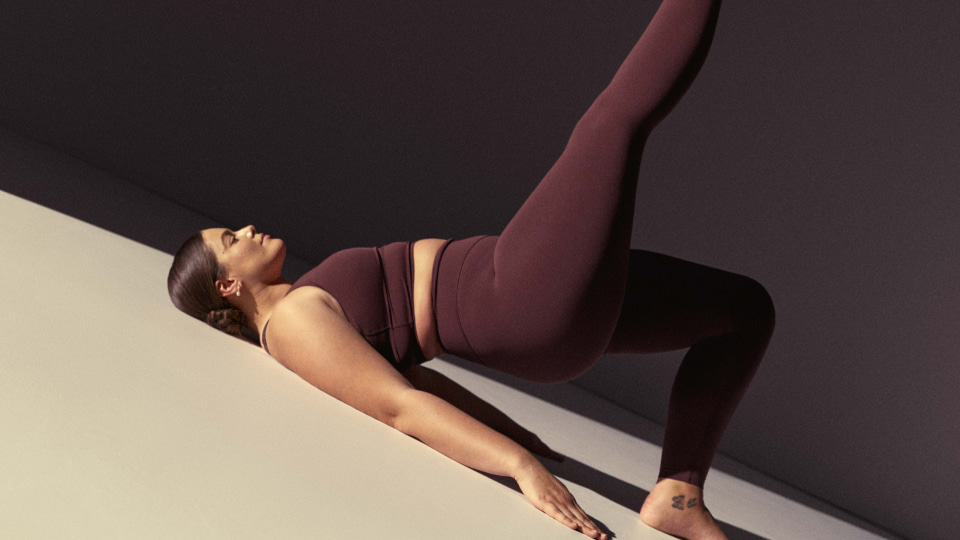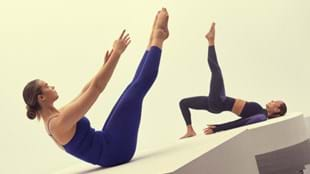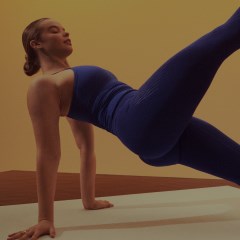11.86 million people participated in Pilates workouts in the United States in 2023, according to the data collector Statista. This is both a 15% increase on the number for the previous year, as well as the highest annual figure for participation in the U.S. since 2010.
Glen Ostergaard, one of the lead Creatives behind LES MILLS PILATES, attributes the rise of the discipline to the cross-training advantages it offers. “The really cool thing about Pilates is you get a lot of benefits without having to rinse yourself every workout. Physically, it has strengthened my core and my glutes, which has helped with my cycle training and lifting weights. I had some back pain – which pretty much disappeared – and I feel less likely to get injured. Mentally, it’s been great. I am not really a yoga guy, so having a different way to calm my nervous system and focus on breathing has been really beneficial.” If you’ve been considering picking up Pilates as an additional program, here are six good reasons to book into training.
Improve overall strength
Pilates is a fantastic way to build functional strength. “The key functional benefits for your body are spine and hip mobility, core control, and glute strength,” says Summer Bradley. “You work the small muscles that support bigger muscles. This can cross over to have a positive impact on other training disciplines.”
Sarah Hinton, who teaches Reformer Pilates, says it’s the awareness of our core muscles that makes the difference. “Pilates is focused on the core. Learning how to activate these muscles in the correct way will improve strength, while awareness of neutral spine alignment can help us move safely and with more strength in all our movements.”

Balance your training
If you find that your training/teaching is heavily skewed towards HIIT, cardio or strength, adding Pilates into the mix can help to redress the balance. “Overtraining, teaching high-intensity workouts without sufficient recovery, or not having adequate warmups and cooldowns can lead to injuries,” says Yogini Nimita Morarji. “Pilates can help minimize that risk. Its focus on core strength, improved postural muscle development, and body awareness is why Pilates is known as a rehabilitation and recovery program.”
Otto Prodan, who also teaches Reformer Pilates, says the workout has helped him remain strong for teaching other programs. “The thing I love about teaching Pilates is incorporating spinal movement into my own training outside teaching classes, which has helped me develop better full-body mobility and strength. Pilates is a really good way to train and regulate the nervous system. If you’re looking for a little bit more balance and longevity with your training, if you’d like to try something challenging and learn a new skill — or if you are working through any chronic injuries — Pilates is for you.”
The low-impact nature of Pilates also means that you can teach it more frequently than other programs, says Shenae Bearman, one of the Master Trainers at STRONG Pilates®. “It’s easy to get behind it as you know members aren’t going to get overloaded/burnt out if they’re doing it frequently, compared to some other forms of exercise.”
Level up your coaching
Teaching Pilates will arm you with a brand-new skillset when it comes to coaching. “It definitely brings a level of coaching challenge compared with other workouts,” says Shenae. “There’s a lot more to cue compared to some of our most basic compound movements — but I think we Instructors always love a challenge, especially if we’ve been in the field for a while. It requires a lot more tactile cueing, which I find gives a better member experience. Some people are kinesthetic learners and need to feel the correct position.”
The practice will also give you greater body awareness, adds Sarah. “We move differently from traditional training. Pilates requires a deeper understanding of how our physical body works. Alignment is important and small shifts in technique will make you feel the movement differently. When we understand this, we become better Instructors and athletes.”
It also offers the opportunity to reinvent yourself as an Instructor, says Kylie Gates. “It’s a great challenge to take up a new program, become a beginner again and remember why you fell in love with teaching in the first place. This offers us longevity as Instructors.”

Improve mind-body connection
Low-impact exercise is on the rise, according to a survey by fitness platform Mindbody, with 41% of consumers preferring low-intensity exercises because of their calming and relaxing benefits. Pilates delivers on this promise with its focus on mindful connection to the body, according to Nimita. “As Joseph Pilates said, ‘Pilates is the complete coordination of mind, body, and spirit.’ This is a comprehensive wellbeing workout where you get to experience the magic of breathing techniques for mental focus and share that with members.”
The focus on breathwork in Pilates will benefit both you and your members, says Otto. “Pilates is all about alignment and breath. These skills are transferable into any other physical activities you do or teach. Your movement becomes more efficient when you’re in the correct position, with the correct breath. You’ll not only feel stronger when working out, but you can teach people how to do the same.”
Nimita agrees: “With a strong emphasis on deep controlled breathing for core activation, you’ll recognize how powerful breathing is for enhancing your lung capacity. This helps boost your energy when teaching other programs, as well as improving your breathwork coaching skills.”
Improve spinal health
With its emphasis on spinal alignment, Pilates is an excellent way to maintain a strong and healthy back, says Sarah. “As Joseph Pilates says, ‘You are only as young as your spine is flexible.’ Having a flexible spine that can move in all planes of motion is a key aspect of Pilates.”
Why teach LES MILLS PILATES™?
Described as Pilates, reimagined, LES MILLS PILATES is coming to a club near you. So why should you think about teaching it?
“You don’t need to be a Pilates guru to teach LES MILLS PILATES,” adds Summer. “The programming has been carefully sequenced and tested, so you don’t have to spend time creating your own workout. It’s set to incredible music that matches the tone and flow of the movements. Plus, you get to do the workout alongside your class, so you also get the benefits!”
Nimita adds: “LES MILLS PILATES integrates the fundamental movements of Pilates with breathing, offering options to accommodate different levels of mobility and flexibility. In other words, you don't have to be able to do the splits or wrap your leg around your head to teach it! This adaptability makes it accessible, so you'll attract a wide demographic of members with varying fitness levels in classes. It's achievable for everyone.”
Naturally, being a Les Mills program means the music is also key. “The music is captivating,” says Kylie. “This keeps you in the workout, as well as creating a space for people to connect internally. It’s cool to observe the progress our members make in class. Seeing people gain confidence will give you pride in your job, knowing you’re making a difference to someone's day.”
Glen Ostergaard agrees: “The class is stunning, a beautiful blend of music and movement that is both artistic and athletic. It's the first in a new wave of classes that Les Mills are producing, so get in on the ground floor and be first to teach it in your area/region/country!”








